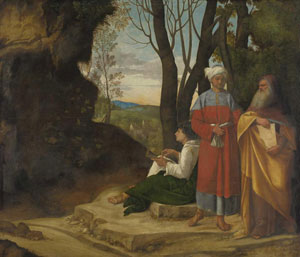12.29.23 — A Museum’s Mission
To wrap up my year-end review from last time, diversity itself has a diversity easy to overlook. Does it call for other cultures, as a good in themselves, or will it remember the rifts in a life?
Pepón Osorio recreates the communities he knows in packed, vivid installations, but with real doubts about who bears responsibility—and for what. Also at the New Museum, Tuan Andrew Nguyen cannot exclude the United States from his account of Vietnam.  Unexploded shells still litter the landscape. They also serve as the material for sculpture modeled after Alexander Calder and ring out as bells.
Unexploded shells still litter the landscape. They also serve as the material for sculpture modeled after Alexander Calder and ring out as bells.
Diversity calls for attention to women, past and present. Does that mean mythmaking after all and felt bodies? David Zwirner presented the latest mythic narratives and wild casts of characters from Dana Schutz, among the year’s very best. At the Guggenheim, one could head up the ramp from Gego to Sarah Sze, where sculpture in suspension becomes chaos—or head down to the Whitney for another abstract sculptor in wire, Ruth Asawa, and a different kind of inheritance. Or check out the Jewish Museum for Marta Minujín, like Gego a South America who left her mark elsewhere. Here the collision of cultures leads to everything from soft sculpture to a night in Central Park.
Black artists showed a still greater diversity. Sure, there was portraiture as personality and politics, in the work of Henry Taylor at the Whitney and Barkley L. Hendricks at the Frick. A two-gallery show of Bob Thompson, one of my top picks, made that a claim to the entirety of western art. Yet Sam Gilliam in his last years revisits both his past work and black abstraction, at Pace. And the Met situated a black artist fully in art history. Juan de Pareja, the slave who sat for and traveled with his master, Diego Velázquez, becomes a leading painter in his own right in Madrid.
Does that entail looking beyond the hype after all, to a wholly new history? For truth to the past, look to museums that remain true to themselves. While blockbusters can put money above mission, the Frick does not. It has its shares of bows to contemporary art, but its finest loan goes back to the Renaissance discovery of painting in oil. Three Philosophers by Giorgione hangs across from the Frick’s own Saint Francis by Giovanni Bellini, as it may have in a Venetian villa five hundred years ago. They become dual enigmas and dual studies in Italian light.
The Frick must still rethink its mission, as it wraps up its time at the Frick Madison and prepares to return to its mansion, renovated and expanded. Other institutions must do so with every show. The Morgan has no qualms about contemporary art, although I have my doubts. Still, two shows focus on its founder, J. P. Morgan, as a collector of Bibles and an heir to medieval money. That may not say everything you need to know about money in art today. Yet they sure come close.
The Jewish Museum must feel the need even more, with a new director and a contested conscience. Can it be both a museum of Jewish heritage and of cutting-edge art? This year it displayed the Sassoons, a family of collectors divided over both. Minujín, for that matter, is the daughter of Russian Jews in Buenos Aries and a self-styled citizen of the world. She also has enough irony to cast doubt on them all. Like diversity and trends, identity is a challenging and changing thing.
Read more, now in a feature-length article on this site.